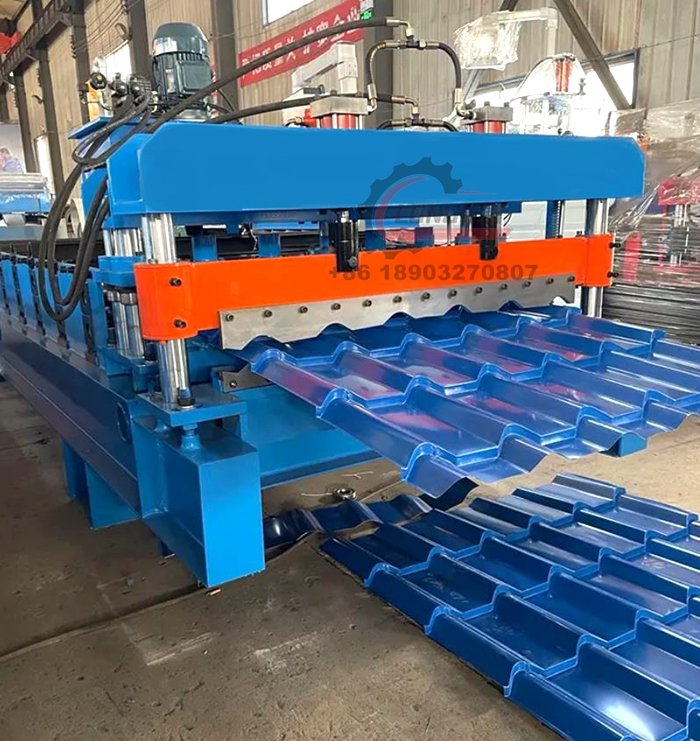Highly Efficient Automatic Roll Forming Machine for Channel Framing Production
Highly Automatic Channel Framing Roll Forming Machine An Innovation in Construction
The construction industry is constantly evolving, driven by the need for efficiency, quality, and sustainability. One of the breakthroughs in this sector is the highly automatic channel framing roll forming machine. This advanced piece of machinery streamlines the production of channel framing, significantly enhancing productivity while ensuring precision and durability in construction materials.
Understanding Roll Forming Technology
Roll forming is a continuous manufacturing process that transforms long strips of metal into shaped profiles. The process utilizes a series of roller dies to bend a flat strip into the desired cross-section gradually. This method is particularly advantageous for producing large quantities of identical parts, such as channel frames used in various applications, including roofing, flooring, and even in the fabrication of furniture.
A highly automatic channel framing roll forming machine integrates the latest technologies to automate many aspects of the production process. This automation includes automatic material feeding, real-time monitoring, and integrated quality control systems, which together enhance efficiency and reduce human error.
Key Features and Benefits
1. High Efficiency One of the most significant advantages of a highly automatic machine is its ability to produce parts at an accelerated rate. Automation allows for continuous operation, which reduces the downtime often associated with manual processes. This leads to a substantial increase in output, making it a cost-effective solution for manufacturers.
2. Precision Engineering The automation of the roll forming process ensures that each channel frame produced meets precise specifications. Advanced sensors and computer-controlled systems monitor every stage of production, maintaining tight tolerances that are often difficult to achieve with manual techniques.
3. Versatility Highly automatic channel framing roll forming machines can be designed to produce a variety of channel profiles and sizes. Manufacturers can easily adjust the machine settings to accommodate different designs, allowing for a versatile product line without significant downtime for reconfiguration.
highly automatic channel framing roll forming machine

4. Reduced Labor Costs With the degree of automation involved, the need for manual labor is significantly reduced. Operators can oversee multiple machines, allowing businesses to operate with a leaner workforce while still meeting production demands.
5. Enhanced Safety Automating the roll forming process reduces the risk of workplace accidents associated with manual handling of heavy materials. With fewer operators directly involved in production, the likelihood of injuries decreases, creating a safer working environment.
Applications in Construction
Channel framing is widely used in the construction industry for various applications, from structural frameworks to curtain wall systems. The automation provided by these machines enables builders to obtain high-quality materials that enhance the structural integrity of buildings. Additionally, the ability to produce customized frames quickly allows for greater flexibility in design and construction scheduling.
Sustainability and Efficiency
As concerns about environmental impact grow, the adoption of highly automatic roll forming machines contributes to more sustainable manufacturing practices. The increased efficiency translates to less waste material and lower energy consumption per unit produced. Additionally, the durability of the materials produced ensures that buildings maintain their integrity over time, leading to longer lifespans and reduced maintenance costs.
Conclusion
The highly automatic channel framing roll forming machine represents a significant advancement in the construction industry, offering a multitude of benefits including improved efficiency, precision, and safety. As automation continues to reshape manufacturing processes, these machines are poised to play a crucial role in meeting the growing demands of modern construction while fostering a more sustainable future. For manufacturers and builders alike, investing in such machinery is a step toward embracing innovation, enhancing productivity, and ultimately delivering high-quality construction materials that meet the rigorous demands of today's projects.
-
Roof Panel Machines: Buying Guide, Types, and PricingNewsJul.04, 2025
-
Purlin Machines: Types, Features, and Pricing GuideNewsJul.04, 2025
-
Metal Embossing Machines: Types, Applications, and Buying GuideNewsJul.04, 2025
-
Gutter Machines: Features, Types, and Cost BreakdownNewsJul.04, 2025
-
Cut to Length Line: Overview, Equipment, and Buying GuideNewsJul.04, 2025
-
Auto Stacker: Features, Applications, and Cost BreakdownNewsJul.04, 2025
-
Top Drywall Profile Machine Models for SaleNewsJun.05, 2025








